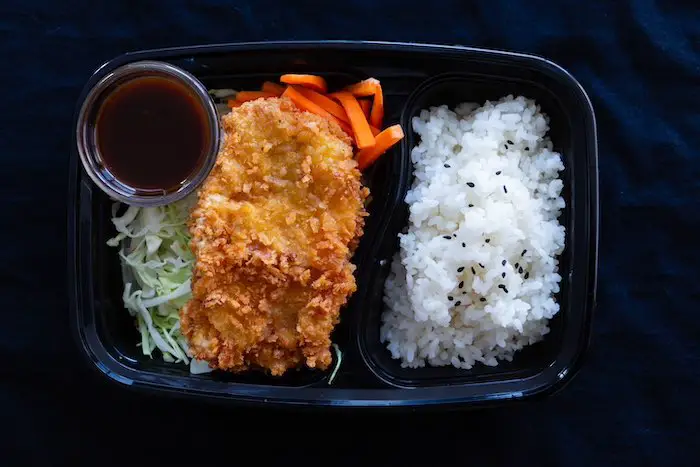We are reader supported. When you purchase through links on our site, we may earn an affiliate commission. Also, as an Amazon affiliate, we earn from qualifying purchases.

The humble ketchup that we find in almost every kitchen and on every dining table and restaurant table across the world has gone through numerous makeovers over the centuries. It most likely, as far as folks have been able to determine, has its origin as the briny fish sauce of Asia, and it then migrated to Europe in the 1600s.
The original word for this condiment was “ke-tsiap” or “koe-chiap,” and soon there were cultural adaptations of the word, leading to many variations (including our most recognized version: “ketchup”). While ketchup is predominantly made of tomatoes, it may also contain other ingredients such as soy, fish juices, nuts, and mushrooms.
As each country and culture adopted different variations of the ketchup-like sauce, they also added their own ingredients, and the name also changed a little. In this post, we will discuss the ketchup found in the two major countries: America and Japan.
So, here’s our take on Japanese Ketchup vs American Ketchup.
What Makes Ketchup So Unique?
Before we get into the details, let’s first take a look at what distinguishes ketchup as a unique sauce. This significance of the sauce is primarily more to do with how the sauce is used: it is used as a condiment instead of an actual ingredient in food (in most cases). We typically use it to boost the flavors and textures of prepared dishes instead of using it for creating a unique dish as a primary ingredient.
A huge boost to its convenience and therefore also its popularity is that ketchup also has a vinegar base, which makes it more resistant to bacterial growth. As a result of this, the condiment stores well at room temperature and does not require refrigeration.
Ketchup is certainly not just tomatoes and vinegar, either. If you take a look around and check out some of the ketchup variations from other countries, some of them may not even have tomatoes in the sauce at all. The humble ketchup has traveled a long way.
Japanese Ketchup

One popular form of Japanese ketchup is known as Tonkatsu sauce. However, it is not merely ketchup plus some additional ingredients, although the main base in the sauce is ketchup. It is essentially a mixture of BBQ sauce and ketchup that is completed with the addition of mirin (Japanese sweet rice wine) and soy sauce. This type of sauce goes well with deep-fried breaded pork or chicken.
It’s widely known that the Japanese love ketchup, and their variation can be found in a variety of dishes such as ketchup fried rice, hayashi rice, omurice, Japanese curry, and more. While the exact origin of this Western-influenced dish is not yet known, there are a few stories about how it became so popular.
The first story dates back to 1945 during the post-World War II period when there was a lack of food. US soldiers had to stay at the New Grand Hotel, and they ate pasta mixed with ketchup. The head chef wanted to create a nutritious yet delicious dish for them, so he used readily available ingredients like onions, peppers, garlic, ham, pasta, and tomato paste.
The dish became an instant hit with the soldiers, and it soon became a popular dish that was available only at the hotels during that specific time period because tomato paste was a luxury item then and not easily accessible everywhere else yet.
The second story occurs in 1960 when Japan began importing ketchup from the US. At this time, the Japanese began to recreate this condiment using tomato paste, which was more available to them. It became very popular, and the chef who was behind this idea, Napolitan, became a household name.
Another equally intriguing story says that the dish was particularly influenced by yakisoba and yaki udon, the noodle dishes that are fried in a pan with soy sauce and other authentic Japanese flavors. The unique flavor lies in the choice of noodles and ketchup used.
American Ketchup

Ketchup became a rather controversial condiment when it arrived in the United States. People called it “the sauce of people who have an unrefined taste.” Many went to the extent of considering it blasphemy to pair up ketchup with a Chicago dog.
With time, ketchup became a staple in America too, and the Americans now have a strange fixation with the sauce. They will slather almost anything and everything with it, including French fries, eggs, and even soaking up food in the tomato-based condiment. Some people will even blend ketchup along with broccoli, white rice, cheese, and other foods.
Most people in the West think that ketchup is an American condiment because it is so rampantly used everywhere, but that’s not actually true. Ketchup has its roots in the fermented fish sauce that was created in China decades and even centuries ago. The name itself bears testimony to its roots as it is derived from Hokkien Chinese words.
The Difference Between Tomato Ketchup and Tomato Sauce
Having discussed the differences between Japanese ketchup and American ketchup, let’s now take a look at the difference between tomato ketchup and tomato sauce as well. Ketchup is made from tomatoes, sugar, vinegar (or acetic acid), and spices. Ketchup is also typically always served cold, never hot.
Tomato sauce, on the other hand, does not contain very many spices. It also does not contain a lot of sugar like its ketchup counterpart. This sauce may be served hot or warm, as desired. However, tomato sauce is typically used as an ingredient in other sauces, such as those created for various pasta dishes, stews, and other meals that need more liquids in their bases.
Related Questions
What are the things you should check when purchasing or ordering ketchup?
Before buying any brand of tomato ketchup, you should check the flavor, taste, and appearance of the product. Take a look to see if the texture is runny or smooth. The hue also plays an important role in determining the quality and taste of the ketchup.
Are there ketchup options with fruit bases?
While the good old American ketchup—and even the Japanese ones—are primarily tomato-based, you can also find tart varieties in some of their international counterparts. You should be able to find ketchup that has a grape or tamarind base or even varieties made from peppers or nuts.
See Also:
What Is The Black Sauce On Sushi?
Can You Use Yakisoba Noodles for Ramen?
What To Put In Onigiri: 30 Filling Ideas
Do Ramen Shops in Japan Use MSG?


